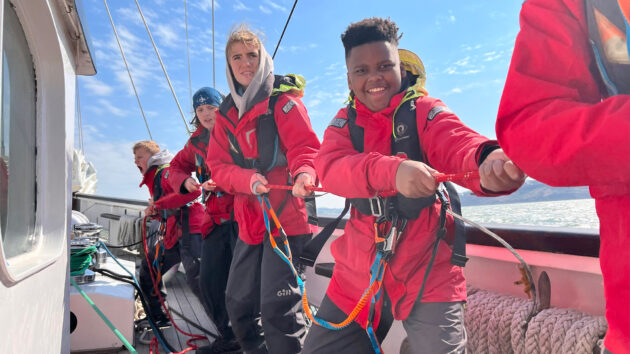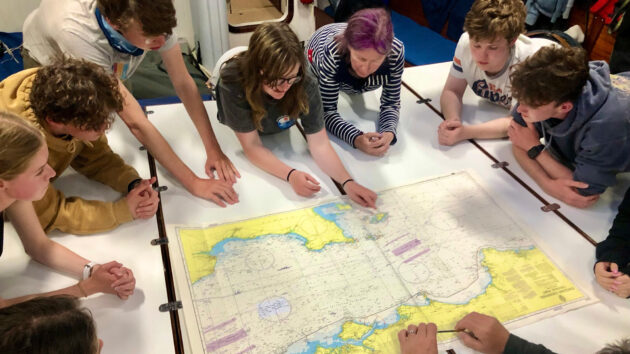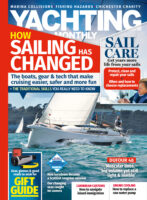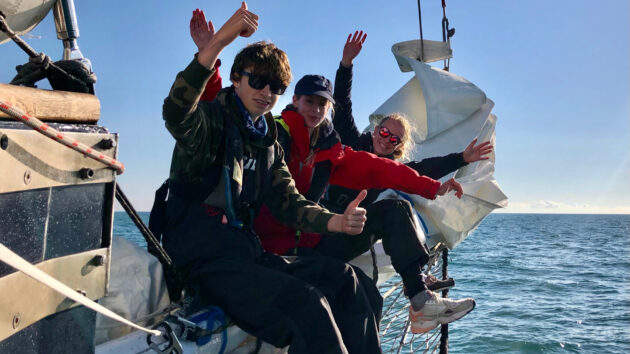The Association of Sail Training Organisations (ASTO) advocates for sail training as one way to help out-of-sight learners find a way back into education and build community.
‘We need more ways back in for the young people who have grown distant from classrooms,’ says Kerry McMillan, Chief Executive of Association of Sail Training Organisations.
ASTO suggests sail training as one way to help out-of-sight learners, such as those who are living in care, educated at home, awaiting enrollment, caring for family members, or otherwise unable to attend for practical or emotional reasons.

Sail training vessel Prolific. Photo: Ocean Youth Trust South.
‘It’s not about making everyone a sailor; it’s about using a voyage to deliver the building blocks of learning: safety, belonging, purpose and progress,’ McMillan explains.
With over thirty member charities across more than 50 vessels, the ASTO network aims to help provide these voyages.

Photo: Ocean Youth Trust South.
Each year, its programmes demonstrably help more than 12,000 youths rebuild confidence, routine, and social relationships.
In an outcome report from before the pandemic, 90% of participants reported a stronger sense of wellbeing, confidence, and better communication, while 93% reported an improved sense of achievement.
Sail training delivers the building blocks of learning

Photo: Ocean Youth Trust South.
During sail training, onboard tasks like helming, navigation, and cooking give young people an opportunity to take on real responsibilities in a safe environment.
Successfully managing these responsibilities and completing a passage restores the sense of agency needed to tackle obstacles in their lives off the water.
Onboard, skippers and mentors are prepared to meet participant’s complex emotional needs and to help them build social connections.
Navigating with a small crew offers a contained social environment with flattened social hierarchies, which can be difficult to recreate on land.

Photo: Ocean Youth Trust South.
Voyages also offer kids the practical and mental health benefits of getting offline and having un-mediated connection with peers and with nature.
Even once participants are back on land, sail training voyages can be a gateway to other opportunities.
Whether it’s continuing or returning to education or taking a step towards college, apprenticeships, language integration programs, or even a maritime career,
‘Voyages create clear bridges to what comes next,’ McMillan says.
Tall Ships Race 2025 brings the ‘tourist event of the year’ to Aberdeen
The Tall Ships Race 2025 fleet will soon set its sights on the shores of Aberdeen. Between the 19th and…
Set sail with the Ocean Youth Trust South this summer
Who is the Ocean Youth Trust? Each year, the Ocean Youth Trust sails with around 450 young people from challenging…
Enjoyed reading about Sail Training?
A subscription to Yachting Monthly magazine costs around 40% less than the cover price, so you can save money compared to buying single issues.
Print and digital editions are available through Magazines Direct – where you can also find the latest deals.
YM is packed with information to help you get the most from your time on the water.
-
-
- Take your seamanship to the next level with tips, advice and skills from our experts
- Impartial in-depth reviews of the latest yachts and equipment
- Cruising guides to help you reach those dream destinations
-
Follow us on Facebook, Twitter and Instagram.
Note: We may earn a commission when you buy through links on our site, at no extra cost to you. This doesn’t affect our editorial independence.






